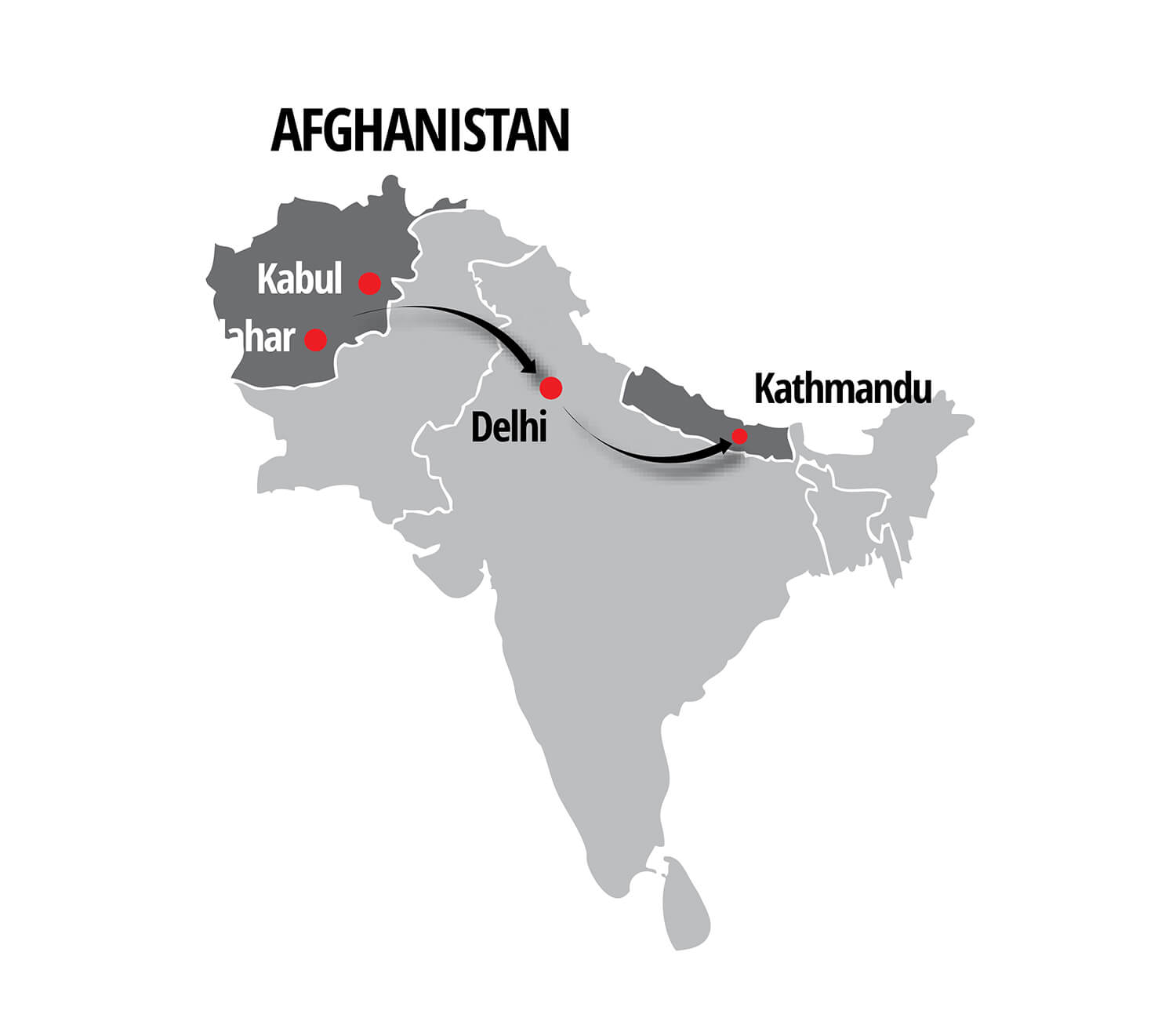Kathmandu's Little Kabul

When Mohammed Daoud fled Afghanistan in 2014, he did not know where he was headed. All he wanted was to keep his family safe from the never-ending violence in his motherland.
Daoud, a 44-year-old motor mechanic from a village near Kandahar, first came to India with his wife and four children and then on to Nepal. He paid $6,000 to an agent who brought his family to Kathmandu by bus.
Daoud owned a sprawling house and a garage back home. Here in Kathmandu, he works as a mechanic for someone else. His family lives in a congested room near the Kathmandu bus park. Despite this, he is happy his family is far away from bombs and bullets.
“I may not be able to feed my family well here, but I do not have to live in a constant fear of losing them,” he says.
His four children were born after the US invasion of Afghanistan in 2011, and grew up caught in between American bombings and Taliban terror. They watched many die in gun battles, bombs and in drone attacks. It was rare for them to see someone die of natural causes.
“Only after coming to Nepal did my children know that people can also die naturally,” Daoud explains.
Most Nepalis have heard about refugees from Tibet. Few know that there are also Afghans who have settled in Nepal. Like Daoud, most have come to Kathmandu from New Delhi after hearing from others that life is relatively easier in Nepal.
The UNHCR has identified 53 Afghan asylum seekers belonging to 13 families in Kathmandu, and all of them live in the Samakhusi neighborhood of Kathmandu, which has become Little Kabul.
Murtaza Zahfary, 34, owned a welding machine factory in southern Kandahar, and was doing brisk business until he was forced to close it down because security forces saw it as a place where the Taliban insurgents could make weapons.

Three years ago, a relative was killed in an American drone attack in another village. His father and brother reached there to pay their last homage. On the way back home, their car was blown up by Taliban insurgents.
Zahfary lost all hope, and paid $10,000 to a trafficker to get him to Nepal via New Delhi. He says: “Had I not left Afghanistan, I would have probably committed suicide by now, if not killed in an attack. I was mentally disturbed after seeing so many deaths and losing my livelihood.”

But life is not easy in Kathmandu, either. Zahfary’s wife is suffering from a neurological disorder, but he does not have money to pay for her treatment. House rents, school fees, food prices and everything is expensive, and they do not earn enough.
The government in Nepal has not granted refugee status to the Afghans, but it does not oust them either. Being undocumented, however, they cannot apply for regular jobs or run their own business.
Most Afghan refugees in Kathmandu are from Kandahar, but there are some from Helmand and Kabul as well. In an unfamiliar city, nearly 2,000km from their homeland, Afghan refugees miss their homes, friends and relatives.
Mohammad Arif Ahmadi, a 53-year-old jeweller from Kandahar, says: “We do not have homes to go back to. They are gone.” He made gold necklaces, bracelets, anklets and earrings, but his shop was blown up four years ago.
Ahmadi wept the day he left his hometown for good, and his eyes welled up as he told us in his rented room in Kathmandu: “Everything was reduced to ashes. I now just have memories. And I am learning to live in a new place, remembering the times when Afghanistan also was at peace.”

Read also:
Ramadan in exile, Sewa Bhattarai
Family separation, Bhutan - style, Jamie Piotrowski




